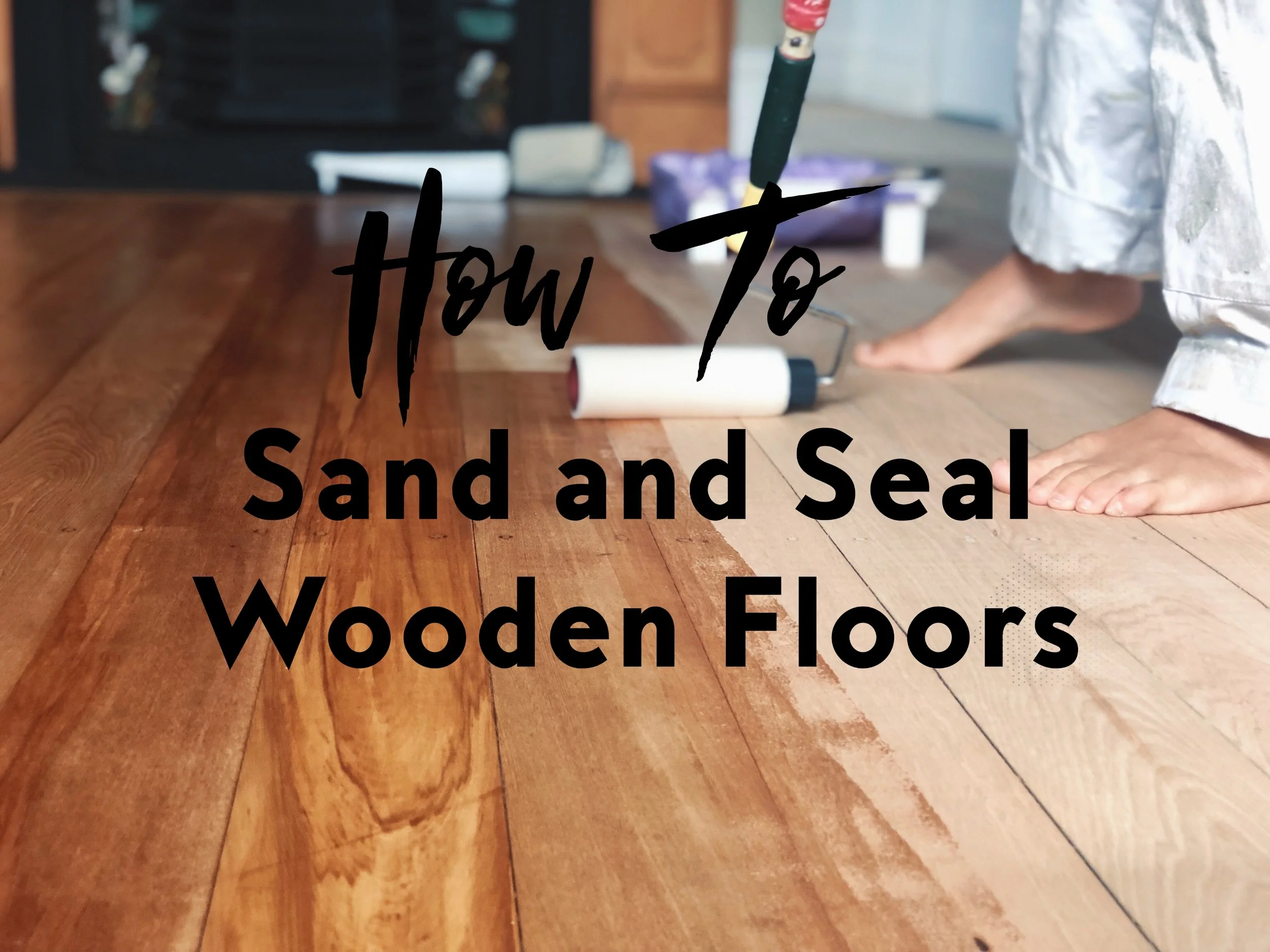HOW TO | Sand and Seal Wooden Floors
Timeframe: 3-5 Days | Tools Required: Drum Sander, Floor Edging Sander, Detail Sander, Hammer, Hole punch, Scraper, Vacuum Cleaner | Materials Required: Sanding belts and discs, Seal, Wood filler, Dust mask, Earmuffs, Eye protection, Plastic, Masking tape
Step 1: Prepare your floors and room for sanding
- Before you can plug your sander in and get going, you need to fully prepare your floors and rooms.
- Start by making sure there are no nails or staples sticking out or exposed in your floorboards. If proud, these can tear your sanding belts.
- If there are nails exposed or flush with the surface, use a nail punch to push these a few mm below the surface of your floorboard. Followed by a wood filler, coloured to your floorboards, to fill these holes.
- If you do have any loose boards, add additional nails to properly secure these. And if you have rotten or damaged floorboards, take time to repair or replace these before starting.
- Before sanding, give your room a clean.
- Floor sanding will become a dusty experience. Remove all furniture, art, curtains from your rooms. Then take time to isolate your room to prevent the spread of dust. Close doors to rooms not being sanded, or use plastic sheets and tape edges.
Step 2: Sand the Floor
- Sanding floorboards is a process, and should not be rushed. You want to follow the correct steps, working through the sandpaper grits to make sure you get the best finish.
- For floor in reasonable condition, start with a 60 grit, then progress to 80 and finish with 120. If your floors are rough and uneven, add a 40 grit at the start - which will be more aggressive in the sanding to remove unevenness.
- Do a full sand of your floorboards with each piece of equipment, Drum sander, Edging Sander and Detail sander - before progressing to the next sequence of grit.
Drum Sander
- The drum sander does the bulk of the sanding work, but can not reach tight up against skirtings or into corners.
- Once you have your drum sander set up, use an even pace and push the sander in the same direction as the floorboards. At the end of the pass, lift the sander off the ground - turn 180 degrees, and repeat. Overlap your passes to get a consistent sanding depth across the room.
- Be careful not to pause the sander in one place, and do not start or stop with the sanding belt in contact with the floor. This can create gouges and pits in your floorboards.
Edging Sander.
- The edging sander reaches tight up against the skirting boards where the drum sander can’t.
- Following the same grit sequence as the drum sander, use the edging sander around the perimeter of your room to sand the floorboards hard against your skirtings. As with the drum sander, use in a constant speed and avoid pausing in one spot.
Detail Sander
- The detail sander is the final step to get into internal corners where the edging sander can not.
- A scraper with a carbide or tungsten blade will also come in handy here in tight corners, in particular if your floor has an existing seal to be removed.
- Finally, use a handheld piece of sandpaper to go over your floors to check for any light sanding scratches, and sand them by hand.
Additional Tips
- For details on how to setup and operate the Drum Sander and Edge Sander, have a look at the How To videos on the Kennards Hire website.
- Regularly replace sandpaper. Fresh belts and discs work much more effectively.
- The first pass of a drum sander can be done on a diagonal, the reason for this is to make sure your floorboards are level across the room. However, all remaining passes need to be done with the grain to remove scratches and sanding marks.
- Clean up between grits. Use a vacuum cleaner with a soft/ brush head to remove dust from your room between sands.
Step 3: Seal the Floor
- There are multiple options to seal wooden floorboards, with the most common being urethane, polyurethane (oil or water based), oils and waxes. Each has different characteristics and requirements.
- We have used a Waterborne Urethane from Resene for our floors, which requires 3 coats. Make sure you read carefully and follow the manufacturers application steps from your specific product. The general steps for applying your seal are as follows.
Remove all dust. Once your sanding is completed, go throughout your room to give it a thorough clean from dust with a broom and vacuum cleaner. Your floors will be very susceptible to scratches and absorbing any liquids in this state, so be especially careful after your final sand.
Prepare your seal. Give your seal a stir for consistency, then place in appropriate container for application.
Start with the edges. Using a brush, cut in and apply the seal into the corners and against the perimeter of your room.
Apply the seal to the rest of your floor using a roller or applicator. Apply in an even and consistent manner. Making sure you work your way to an exit point.
Depending on your seal, repeat and apply the required coats. It is recommended to do a light hand sand before the final coat (using 240 grit) to get a smooth final finish with your seal.
After your final coat, take care with the finished floor. There is commonly a period of days for your seal to fully cure - refer the manufacturers details as to how long this process with take with your seal.
Cost Breakdown
Drum sander and edging sander hire from Kennards Hire - $306 for 2 days hire (or $153 per day)
Sanding Discs - $100 (sufficient for 25m2 floor)
Seal - Resene Qristal ClearFloor 1k $270 (2x 4L tins)
Total $676

